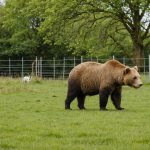Crafting a Nutritious Raw Diet for Your Growing Boxer Puppy: A Comprehensive Guide
When it comes to feeding your Boxer puppy, the decision to opt for a raw diet can be both exciting and intimidating. When done correctly, a raw diet can provide your puppy with the nutrients they need to grow strong and healthy. Here’s a detailed guide to help you navigate the world of raw feeding for your Boxer puppy.
Understanding the Basics of a Raw Diet
Before diving into the specifics, it’s essential to understand what a raw diet entails. A raw diet for dogs typically includes uncooked meat, bones, and sometimes fruits and vegetables. Here are some key points to consider:
A lire également : Essential Tips for Choosing the Perfect Training Collar for Your Stubborn Akita
What is a Raw Diet for Dogs?
A raw diet is designed to mimic the natural diet of wild canines, focusing on raw meat, bones, and other unprocessed foods. This approach is based on the belief that dogs are evolutionarily adapted to eat raw foods and that processed dog foods can lack essential nutrients[4].
Potential Benefits of Raw Diets
- Improved Digestion: Many dog owners report better digestive health when switching to a raw diet.
- Shinier Coat: Raw diets often lead to healthier skin and a shinier coat.
- Increased Energy: Dogs may exhibit more energy and vitality.
- Reduced Allergies: Some dogs experience a reduction in food allergies and sensitivities[4].
Planning Your Puppy’s Raw Diet
Nutritional Requirements
Boxer puppies have specific nutritional needs that must be met to ensure healthy growth. Here are some key nutrients to focus on:
Cela peut vous intéresser : Creating a Comfortable Climate: Essential Habitat Requirements for Saint Bernards in Warm Environments
- Protein: High-quality protein sources like chicken, beef, and fish are crucial.
- Fat: Essential fatty acids support skin, coat, and overall health.
- Calcium and Phosphorus: These minerals are vital for bone development.
- Vitamins and Minerals: A balanced mix of vitamins and minerals is necessary for overall health.
Creating a Balanced Raw Diet
To ensure your puppy is getting all the necessary nutrients, you need to create a balanced diet. Here’s a detailed list of what you should include:
- Muscle Meat: Include a variety of muscle meats like chicken, beef, and fish.
- Example: Chicken breast, beef strips, salmon fillets.
- Meaty Bones: These provide calcium and other minerals.
- Example: Chicken necks, beef knuckle bones, fish heads.
- Organs: Organs like liver, kidneys, and spleen are rich in vitamins and minerals.
- Example: Chicken liver, beef kidneys.
- Fruits and Vegetables: While not essential, these can add fiber and vitamins.
- Example: Apples, carrots, sweet potatoes.
### Sample Raw Diet Plan for a Boxer Puppy
| Day | Breakfast | Dinner |
|
|--------------------------------------------|
|
| Mon | 1 lb Chicken Breast, 1/2 lb Chicken Neck | 1 lb Beef Strips, 1/2 lb Beef Knuckle Bones|
| Tue | 1 lb Fish Fillets, 1/2 lb Fish Heads | 1 lb Chicken Thighs, 1/2 lb Chicken Liver|
| Wed | 1 lb Beef Strips, 1/2 lb Beef Marrow Bones | 1 lb Chicken Breast, 1/2 lb Chicken Kidneys|
| Thu | 1 lb Chicken Thighs, 1/2 lb Chicken Necks | 1 lb Fish Fillets, 1/2 lb Fish Heads |
| Fri | 1 lb Beef Strips, 1/2 lb Beef Knuckle Bones| 1 lb Chicken Breast, 1/2 lb Chicken Liver |
| Sat | 1 lb Fish Fillets, 1/2 lb Fish Heads | 1 lb Chicken Thighs, 1/2 lb Chicken Kidneys |
| Sun | 1 lb Beef Strips, 1/2 lb Beef Marrow Bones | 1 lb Chicken Breast, 1/2 lb Chicken Necks |
### Note:
- The portions should be adjusted based on the puppy's weight and age.
- Always consult with a veterinarian before making any significant changes to your puppy's diet.
Transitioning Your Puppy to a Raw Diet
Transitioning your puppy to a raw diet should be done gradually to avoid digestive upset. Here’s a step-by-step guide:
Gradual Introduction
- Week 1-2: Mix a small amount of raw food with their current kibble.
- Week 3-4: Increase the proportion of raw food to kibble.
- Week 5 and beyond: Transition fully to raw food, monitoring your puppy’s health and adjusting as necessary[1].
Monitoring Health
Keep a close eye on your puppy’s health during the transition. Look for signs such as:
- Improved stool quality
- Increased energy
- Better coat condition
- Any adverse reactions like vomiting or diarrhea
Potential Risks and Considerations
While a raw diet can be highly beneficial, there are also potential risks to consider:
Choking Hazards and Dental Issues
Raw bones can pose a choking hazard and may cause dental problems if not chosen correctly. Opt for meaty bones that are large enough not to be swallowed whole[4].
Nutritional Imbalances
A raw diet can be nutritionally imbalanced if not planned carefully. Ensure that your puppy is getting all the necessary nutrients by consulting with a veterinarian or a canine nutritionist.
Cost and Convenience
Raw diets can be more expensive and less convenient than traditional kibble. However, many pet owners find the benefits outweigh these drawbacks.
Real-Life Examples and Testimonials
Many pet owners have seen significant improvements in their dogs’ health after switching to a raw diet. Here are a few testimonials:
- “After switching my Boxer to a raw diet, I noticed a significant improvement in his digestive health and energy levels. His coat is shinier, and he seems more vibrant than ever before.”
- “My Boxer puppy had severe allergies and skin rashes on a traditional kibble diet. Since switching to raw, these issues have completely cleared up, and he is now a happy and healthy dog.”
Practical Tips for Feeding Your Boxer Puppy Raw
Here are some practical tips to keep in mind when feeding your Boxer puppy a raw diet:
Feed According to Weight
Adjust the amount of food based on your puppy’s weight and activity level. A general rule is to feed 2-3% of your puppy’s body weight per day, divided into two meals.
Choose High-Quality Ingredients
Opt for fresh, human-grade ingredients to ensure your puppy is getting the best possible nutrition.
Avoid Overfeeding
Boxer puppies can be prone to obesity, so it’s crucial to monitor their weight and adjust feeding amounts accordingly.
Crafting a nutritious raw diet for your Boxer puppy requires careful planning, attention to detail, and a commitment to providing the best possible nutrition. By understanding the basics of a raw diet, planning a balanced meal plan, and being aware of the potential risks and considerations, you can help your puppy grow into a healthy and vibrant adult dog.
Remember, always consult with a veterinarian before making any significant changes to your puppy’s diet, and be patient during the transition process. With the right approach, a raw diet can be a rewarding and healthy choice for your Boxer puppy.
Potential Health Risks Associated with Raw Diets
When considering a raw feeding regimen for your pet, understanding the health risks involved is crucial. Raw diets, when incorrectly managed, can pose several concerns. Ingredient contamination is a significant risk, often arising from improper handling or storage of raw meat. This can expose pets to harmful bacteria like Salmonella or E. coli, leading to severe health issues.
Moreover, achieving a balanced diet with raw feeding can be challenging. Pets require a precise ratio of nutrients, and any imbalance—such as a deficiency or excess in protein, vitamins, or minerals—can have adverse effects on their health. For example, an excess of vitamin A or D can lead to toxicity, while a lack of calcium may cause skeletal issues.
To mitigate potential issues with raw feeding, vigilance is essential. Always source high-quality ingredients, strictly adhere to proper storage guidelines, and consider consulting a veterinary nutritionist to ensure dietary requirements are met. Recognizing symptoms of dietary imbalance, such as changes in coat quality or behaviour, can prevent long-term health problems for your beloved pet.













